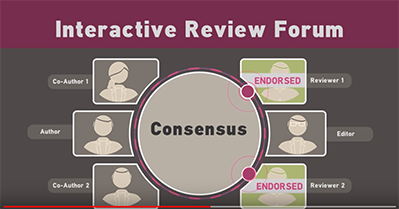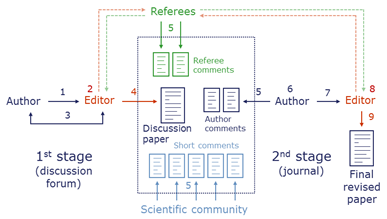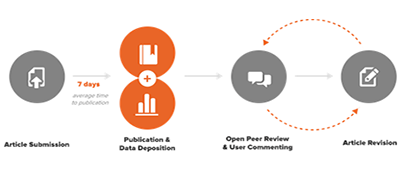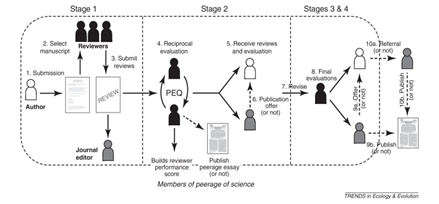Open Peer Review Methodologies
What Open Peer Review methods exist and how do they unfold?
Collaborative peer review
The Collaborative Review Forum unites authors, reviewers and the Associate Editor – and if need be the Specialty Chief Editor – in a direct online dialogue, enabling quick iterations and facilitating consensus. Editors and reviewers work with the authors to improve their manuscript.
Consultative peer review
In consultative peer review, the referees and editor discuss the manuscript and referee reports before agreeing which revisions should be requested in the decision letter.
Interactive peer review
It is a two-stage publication process. In the first stage, manuscripts that pass a streamlined access-review are immediately typeset and published in the discussion forum in our on-screen format optimized for online reading.
Post-publication peer review
There are several types of post-publication peer review. The type used by journals such as F1000Research and Copernicus journals includes a peer review that is carried out by invited reviewers, like it’s done at most journals, but the article is already published online (after an editorial check) before the peer review process starts.
Decoupled peer review
Peer review in Peerage of Science consists of four stages. Each stage has a deadline, set by the Authors upon sending their manuscript and displayed to Peers deciding whether to engage as a Reviewer.










